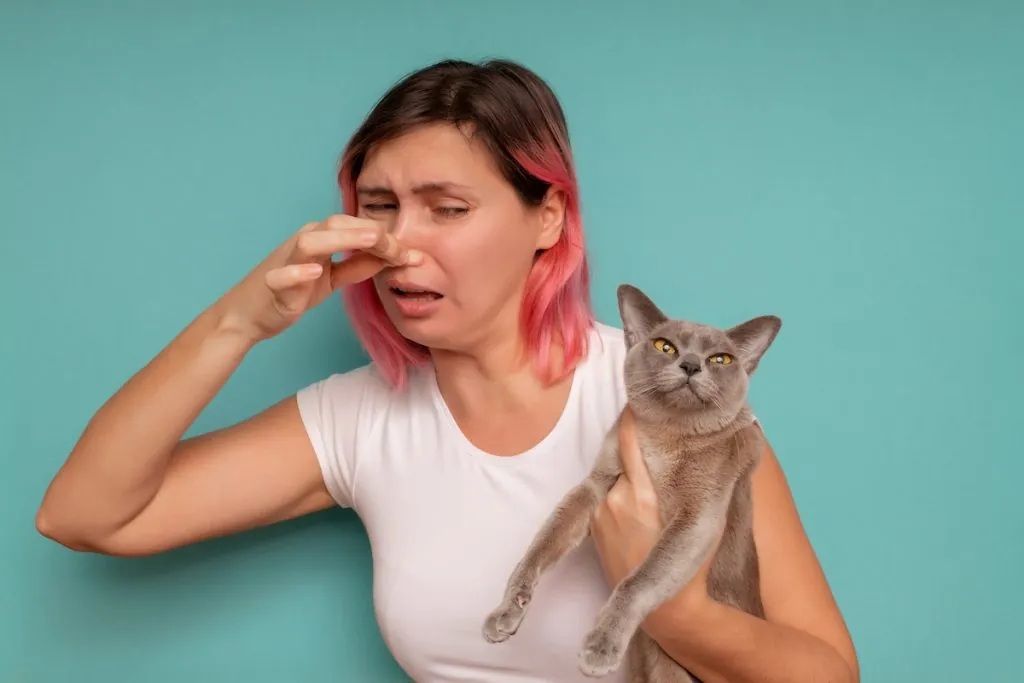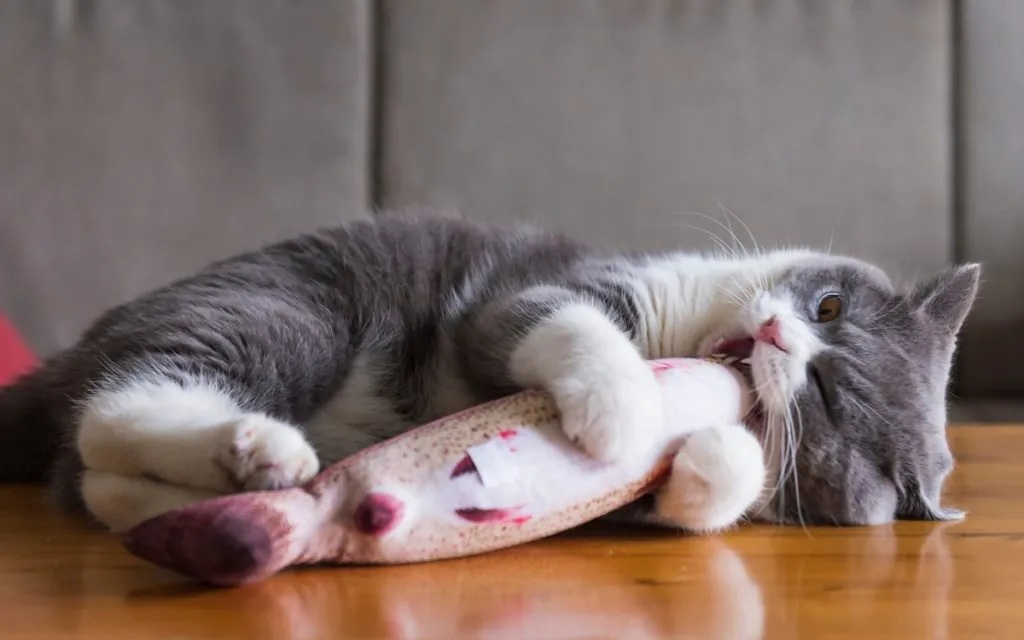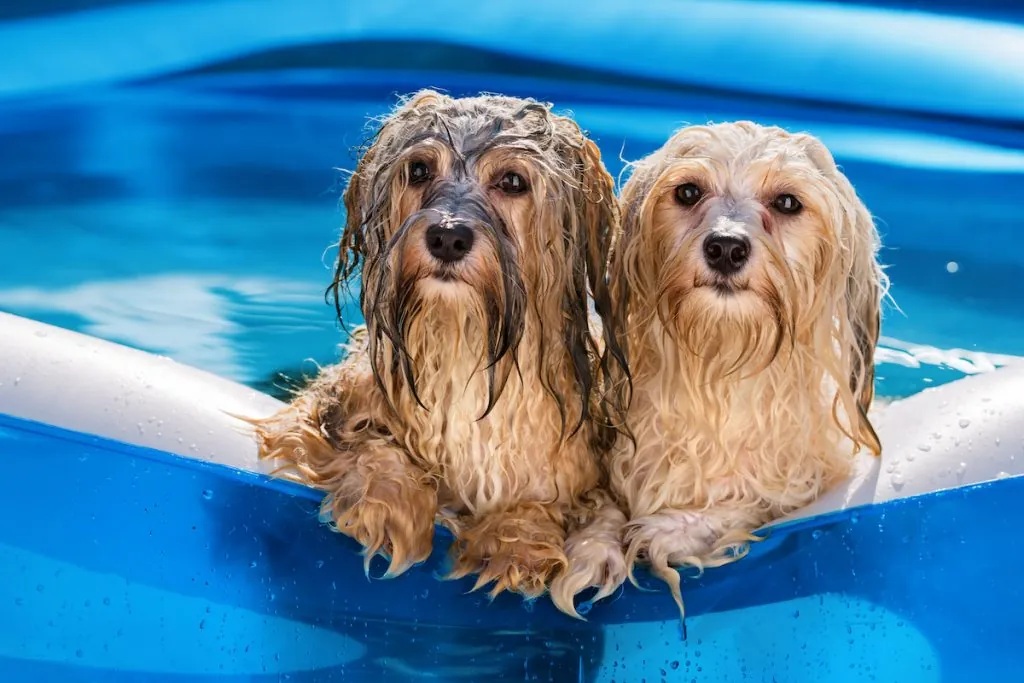Our pets are cherished members of our Hendersonville families, bringing endless joy and companionship to our lives. With many U.S. households owning a pet, it’s clear we can’t imagine life without them. However, in the warm and humid climate of Hendersonville and all of Mid TN, the delightful presence of our furry friends can sometimes be accompanied by less-than-delightful odors.
From the aftermath of a romp at the Memorial Park Dog Park to the everyday scents that settle into our homes, managing pet odors can feel like a constant battle. But with a proactive approach, you can ensure your home stays fresh and inviting, even during the most sweltering days of 2025. This guide will provide you with actionable tips to eliminate pet odors before they take over your Hendersonville home.

Understanding the Sources of Pet Odors in The Mid “Volunteer State” and How to Eliminate Pet Odors
The Infamous “Wet Dog” Smell: That distinctive, musty aroma that appears after your dog has enjoyed a swim or a walk in the rain is a common complaint. In Hendersonville’s humid environment, this smell can be particularly potent. The odor is caused by the evaporation of water from your dog’s coat, which releases the smells of the microorganisms living on their skin and fur.
Feline Fragrances: For our cat-loving residents, the litter box is often the primary source of unpleasant smells. A dirty litter box can quickly overwhelm a room. However, a strong odor from your cat could also indicate an underlying health issue, such as an infection, making it crucial to identify the source.
Hendersonville, TN Property Restoration, Water Damage and Odor Elimination Services
Proactive Strategies for a Fresh-Smelling Hendersonville Home
The key to winning the war against pet odors is to stop them before they start. Here are some preventative measures you can take:
Consistent Grooming is Key:
- Regular Baths: A consistent bathing schedule is vital for removing dirt, dander, and odor-causing bacteria from your pet’s coat.
- Thorough Drying: After a bath or a swim, make it a priority to dry your dog completely. Use a towel or a hairdryer on a cool setting to prevent the “wet dog” smell from permeating your furniture and carpets.
- Frequent Brushing: Regular brushing not only reduces shedding but also removes loose fur that can trap odors.
Maintain a Clean Environment:
- Vigilant Vacuuming: Pet hair and dander can accumulate quickly. Frequent vacuuming of floors, rugs, furniture, and curtains is non-negotiable for pet owners.
- Wash Pet Bedding Weekly: Your pet’s bed is a hotspot for saliva, dander, and hair. Washing it regularly in hot water will significantly reduce odors. Ensure the bedding is completely dry before your pet uses it again.
- Clean Toys and Bowls: Don’t forget to regularly wash your pet’s toys and food and water bowls to prevent the buildup of odor-causing bacteria.
Harness the Power of Natural Deodorizers:
- Baking Soda: This household staple is a powerful, natural odor eliminator. Sprinkle it on carpets and upholstery, let it sit for about 15 minutes, and then vacuum it up. A small, open box of baking soda can also help neutralize odors in the air.
- White Vinegar: The acetic acid in white vinegar works to neutralize alkaline pet odors. A spray bottle filled with a solution of equal parts water and white vinegar can be used to deodorize fabrics and surfaces. The vinegar smell will dissipate as it dries.
Improve Your Indoor Air Quality:
- Invest in an Air Purifier: An air purifier with a HEPA filter is an excellent investment for Hendersonville and all Mid TN homes. It will not only help to remove pet odors but also trap pet dander and other allergens that are prevalent in Tennessee’s environment.
- Regularly Change HVAC Filters: Your home’s HVAC system can circulate pet odors. Be sure to change your filters monthly to maintain good air quality and reduce smells.
- Embrace the Breeze: Whenever the weather permits, open your windows and doors to allow fresh air to circulate through your home.
Immediate Accident Cleanup:
- Act Fast: When accidents happen, clean them up immediately to prevent odors from setting in.
- Use Enzymatic Cleaners: These cleaners are specifically designed to break down the organic proteins in pet urine and feces, effectively eliminating the odor rather than just masking it.
Read Also: Smoke Odor Removal: The Ultimate Guide to Banishing Cigarette Smell from Your Hendersonville Home
When to Seek Professional Help
If you’ve tried these tips and the pet odor persists, it may be time to call in the professionals. A professional deodorization company has the specialized equipment and pet-safe products to effectively eliminate even the most stubborn odors.
By taking a proactive approach to pet odor management in 2025, you can enjoy a clean, fresh-smelling home in Hendersonville, TN, while continuing to cherish the companionship of your beloved pets.
The Ultimate 2025 Guide: Eliminating Pet Odors Before They Dominate Your Hendersonville, TN Home
Imagine this: A gentle breeze whispers through your open windows, carrying the fresh, warm air into your living room, illuminating the happy, tail-wagging (or purring) companion at your feet. This is the idyllic Hendersonville lifestyle so many of us cherish. Our pets are not just animals; they are family.
But let’s be honest. Sometimes, another scent competes with that fresh breeze—an aroma that is decidedly more… animal. In the unique, humid climate of Sumner County, common pet odors don’t just exist; they thrive. They seem to cling to the very air, embedding themselves in our furniture, carpets, and routines. The battle against pet smells can feel like a relentless, uphill struggle against an invisible invader.
Fear not. This is not a battle you have to lose. In fact, you can win it before it even begins.
This is your ultimate 2025 guide to moving beyond simply masking pet odors and transitioning to a proactive strategy of complete elimination. We’re going to dive deep into the science behind the smells, provide a room-by-room playbook for defending your home, and offer a comprehensive toolkit of strategies specifically adapted for the challenges of our warm Tennessee environment. Get ready to transform your home back into the fresh, clean sanctuary you and your pets deserve.

The Science of Smell: Why Your Nose Knows (Especially in Tennessee)
To defeat an enemy, you must first understand it. Pet odor isn’t just “a smell”; it’s a complex cocktail of biological compounds. Understanding the source is the first step toward true eradication.
The Infamous “Wet Dog Smell”: A Microbiome in Action
Every dog owner knows it. That pungent, musty, “Frito-like” scent that blossoms the moment your dog gets wet, whether from a dip at the Dog Park or a sudden Hendersonville downpour. This odor isn’t the smell of the dog itself, but rather the smell of microscopic life living on your dog.
Your dog’s coat is a complex ecosystem, home to billions of microorganisms like yeast (notably Malassezia pachydermatis) and bacteria. In a dry state, these microbes produce volatile organic compounds (VOCs) at a slow, often unnoticeable rate. However, when you introduce water, everything changes. Water acts as a solvent and a propellant. It displaces these smelly VOCs from the fur and skin, launching them into the air where they can travel directly to your olfactory receptors.
The Hendersonville Humidity Factor: Here in Tennessee, high humidity means the air is already saturated with water vapor. This slows down the evaporation process, allowing that “wet dog” smell to linger for hours, or even days. The damp air acts like a heavy blanket, trapping the odor molecules close to the ground and allowing them to penetrate deeper into porous surfaces like your couch and carpets.

Feline Fragrances: The Unforgiving Chemistry of Cat Odor
Cat-related odors, while less pervasive than the “wet dog” smell, are chemically more resilient and challenging to eliminate.
- The Litter Box Problem: Cat urine is a potent brew of urea, urochrome, and uric acid. While urea and urochrome are relatively easy to clean, uric acid is the true villain. It’s composed of non-water-soluble salt crystals. When you attempt to clean cat urine with plain water or simple soap, you might remove the other components, but the uric acid crystals are left behind. These crystals remain dormant until they are exposed to moisture, like the ever-present humidity in a typical Hendersonville home. When they get damp, they re-crystallize and release the full, pungent odor all over again. This is why a urine spot you thought you cleaned can suddenly reappear on a humid day.
- Scent Marking and Spraying: Cats communicate through scent. While the gentle head-bunting that leaves pheromones on your leg is harmless, territorial spraying is a different story. The urine used for spraying contains additional chemicals, including felinine and isovalthene, which are designed to be powerful, long-lasting signals to other cats. These compounds are notoriously difficult to break down and require specialized cleaners.
- Dander and Hair: It’s not just about accidents. Both cats and dogs shed dander (dead skin cells) and hair. This dander is a primary food source for dust mites and odor-causing bacteria. The hair itself acts as a vehicle, carrying dander, oils, and outdoor allergens throughout your home, depositing them everywhere your pet goes.
The Proactive Playbook: A Head-to-Tail Grooming Regimen
The single most effective way to control pet odor is to manage it at the source: your pet. A rigorous, consistent grooming routine is not an indulgence; it’s your first and best line of defense.
READ ALSO: What Is That Smell? 7 Proven Odor Removal Tips to Eliminate Bad Smells from Your Hendersonville Home Fast
The Ultimate Bathing and Drying Strategy
- Choose the Right Shampoo: Don’t just grab any bottle.
- Deodorizing Shampoos: These often contain ingredients like baking soda, oatmeal, or specific enzymes to neutralize odors.
- Medicated Shampoos: If your vet diagnoses a skin condition or yeast infection (common in humid climates), a medicated shampoo will treat the underlying cause of the odor.
- Hypoallergenic Shampoos: For pets with sensitive skin, these gentle, fragrance-free options are ideal.
- The Double-Wash Technique: For a truly deep clean, wash, rinse, and repeat. The first wash breaks up the surface dirt and oils. The second wash cleans down to the skin, eliminating the source of the odors.
- Conditioning is Crucial: A good conditioner helps to re-hydrate the skin and smooth the hair cuticle, which can reduce shedding and make your pet’s coat less hospitable to microbes.
- Drying is Non-Negotiable: A damp dog is a smelly dog. In Hendersonville’s climate, air-drying can take forever and encourages microbial growth.
- Towel Dry Vigorously: Start with a super-absorbent microfiber or shammy towel.
- Invest in a High-Velocity Dryer: For home groomers, these devices don’t use heat; they blast water off the coat with force. They are incredibly effective at getting a pet fully dry, from the undercoat out.
- Hair Dryer on Cool: For smaller dogs, a regular hairdryer on the coolest, lowest setting can work. Keep it moving to prevent concentrating heat on one spot.
Beyond the Bath: Daily and Weekly Rituals
- Brushing: Daily brushing is essential. It removes loose hair and dander before they can furnish your home. Select the right tool for your pet’s coat: a slicker brush for tangles, a pin brush for long hair, and a de-shedding tool (like a FURminator) during peak shedding seasons to remove the dense undercoat.
- Paw Care: Your pet’s paws are magnets for dirt, sand, allergens, and bacteria.
- Create a Paw Wiping Station: Keep a shallow tub of water and a dedicated “paw towel” by the door. A quick dip and wipe after every trip outside makes a world of difference.
- Inspect and Trim: Regularly check between paw pads for debris and trim the hair to prevent matting and trapping of moisture and dirt.
- Dental Hygiene: “Dog breath” is a major contributor to household odor. It’s also often a sign of dental disease, which can lead to serious health issues.
- Daily Brushing: It’s the gold standard. Use a pet-specific toothbrush and enzymatic toothpaste.
- Dental Chews & Water Additives: These can be helpful supplements to brushing, but not replacements. They help reduce plaque buildup.
- Know the Signs: Bad breath, yellow/brown tartar, red gums, and difficulty eating are all red flags that warrant a vet visit.
- Ear Cleaning: Floppy-eared dogs are especially prone to ear infections in our damp climate. Trapped moisture creates a perfect breeding ground for yeast and bacteria.
- Weekly Checks: Gently lift the ear flap and look for redness, swelling, or discharge. Give it a sniff; a foul or yeasty odor is a sure sign of a problem.
- Safe Cleaning: Use a vet-approved ear cleaning solution on a cotton ball (never a Q-tip, which can damage the ear canal) to gently wipe the outer parts of the ear.
Your Room-by-Room Guide to an Odor-Free HendersonvilleHome

Odor control requires a strategic defense of your entire living space. Here’s how to tackle each room.
The Living Room: The Heart of the Home
This is where you and your pets spend the most time together, so it’s ground zero for odors.
- Upholstery Deep Dive: Your sofa is a giant sponge.
- Fabric Couches: Sprinkle liberally with baking soda, let it sit for at least 30 minutes (a few hours is better), and vacuum thoroughly using the upholstery attachment. For deeper cleaning, use a dedicated upholstery steam cleaner with a pet-formula solution.
- Leather Couches: Wipe down regularly with a 50/50 solution of water and white vinegar. The vinegar neutralizes odors, and the smell dissipates as it dries. Follow up with a quality leather conditioner.
- The Magic of Slipcovers: The ultimate solution. Buy machine-washable slipcovers and launder them weekly.
- Carpets & Rugs: The Fiber Trap:
- Vacuuming Technique: Don’t just rush through it. Use a slow, overlapping cross-hatch pattern (north-south, then east-west) to lift fibers from all directions.
- The HEPA Filter Advantage: Your vacuum cleaner should have a HEPA filter to trap microscopic dander and allergens, preventing them from being blown back into the air.
- DIY Carpet Deodorizer: Mix one cup of baking soda with 10-15 drops of a pet-safe essential oil like lavender. Sprinkle over the carpet, wait an hour, and vacuum.
- Professional Cleaning: Schedule a professional steam cleaning at least once or twice a year. It’s an investment in the life of your carpet and the freshness of your home.
- Curtains & Blinds: These are silent odor collectors. Wash curtains seasonally. For blinds, wipe them down with a microfiber cloth dampened with a vinegar-water solution.
The Bedroom: Protecting Your Sanctuary
A smelly bedroom disrupts sleep and well-being.
- The Bedding Rule: Wash all your bedding—sheets, blankets, comforters—weekly in hot water. If your pet sleeps with you, this is non-negotiable. Consider using a dedicated, easily washable “pet blanket” on top of your comforter.
- The Pet Bed: This is often the most concentrated source of odor in the entire house. Choose a bed with a removable, machine-washable cover and wash it weekly. For the inner pillow, sprinkle with baking soda and leave it out in the Tennessee sun for a few hours; UV light is a natural disinfectant and deodorizer.
The Kitchen & Entryway: First Lines of Defense
- Feeding Station: Wash food and water bowls daily with hot, soapy water to prevent bacteria (biofilm) buildup. Stainless steel or ceramic bowls are far more hygienic than porous plastic.
- The Mudroom/Entryway Cleaning Station: This is where you stop odors at the door. Your station should include:
- An absorbent, washable rug.
- A stack of clean towels.
- A bottle of pet-safe paw wipes.
- A hamper for dirty towels.
Harnessing Technology and Nature: Your Deodorizing Toolkit
Arm yourself with the right tools to actively remove odors from the air and surfaces.
Air Purification: A Game-Changer for Tennessee Homes
- HEPA is King: High-Efficiency Particulate Air (HEPA) filters are certified to capture 99.97% of particles as small as 0.3 microns. This includes pet dander, dust mite feces, and pollen.
- Activated Carbon is for Odors: While HEPA filters trap particles, activated carbon filters trap odors. The carbon’s porous surface adsorbs the gaseous VOCs responsible for smells. For pet owners, a purifier with both a HEPA and a substantial carbon filter is the gold standard.
- CADR and Sizing: Look for the Clean Air Delivery Rate (CADR). This tells you how quickly the purifier can clean a room. Match the CADR to your room’s square footage for maximum effectiveness. Place the unit in the room where your pet spends the most time.
- HVAC System Optimization: Your central AC is your home’s lungs. Use it to your advantage.
- High-MERV Filters: Upgrade from standard fiberglass filters to filters with a MERV (Minimum Efficiency Reporting Value) rating of 8-12. These capture a much higher percentage of airborne particles.
- Professional Duct Cleaning: If you’ve just moved into a home previously owned by pet owners, or if odors persist despite all your efforts, your air ducts could be coated in years of dander and dust. A professional cleaning can make a dramatic difference.
The Natural Solutions Arsenal
- Baking Soda: The champion of cheap and effective odor absorption. Use it everywhere: on carpets, in pet beds, in a dish in the fridge, and even a small amount mixed into your cat’s litter.
- White Vinegar: Its acetic acid breaks down alkaline molecules in pet urine. Create an all-purpose deodorizing spray with a 50/50 mix of white vinegar and water in a spray bottle. It’s safe for most fabrics (spot-test first!).
- Activated Charcoal: Use bags of activated charcoal (bamboo charcoal) as passive odor absorbers in closets, cars, and near litter boxes.
- A Word of CAUTION on Essential Oils: While they can make a home smell lovely, many essential oils are highly toxic to pets, especially cats.
- TOXIC OILS: Avoid diffusing Tea Tree, Pine, Citrus (lemon, orange), Peppermint, Cinnamon, and Eucalyptus oils.
- SAFER OPTIONS (use sparingly in a well-ventilated room): Lavender, Chamomile, and Frankincense are generally considered safer.
- NEVER apply essential oils directly to your pet’s skin or fur.
Crisis Management: The Accident Action Plan
Even with the best-behaved pet, accidents happen. Your response in the first few minutes is critical.
- Blot, Don’t Rub! Immediately grab a thick wad of paper towels and stand on it. Blot up as much of the liquid as you possibly can. The more you remove now, the less there is to treat.
- Rinse and Blot Again: Gently pour a small amount of cool water on the spot and repeat the blotting process. This helps to dilute the remaining urine.
- Bring in the Enzymes: This is the crucial step. Douse the area with a high-quality enzymatic cleaner. These products contain beneficial bacteria and enzymes that literally digest the uric acid crystals, completely eliminating the source of the odor. Don’t be shy with the spray; you need to saturate the spot as deeply as the urine went, including the carpet padding.
- Cover and Wait: Cover the treated area with a damp towel and let it sit for 24-48 hours. This keeps the enzymes “alive” and working.
- Air Dry: Once the waiting period is over, remove the towel and let the area air dry completely.
Finding Old Stains: Can’t locate the source of a smell? A UV blacklight will cause the salts in dried urine to fluoresce, revealing old, hidden accident spots.
Your Final Step to a Fresher Hendersonville Home

Living with pets in our beautiful corner of Tennessee is a joy that far outweighs the challenges. By adopting a proactive mindset and using the detailed strategies in this guide, you can absolutely have a home that smells fresh, clean, and inviting, not like the local dog park.
It’s about creating a system: consistent grooming, daily cleaning rituals, leveraging the right technology, and responding to accidents swiftly and effectively. Embrace these practices, and you’ll find that the only thing that dominates your Hendersonville home is the love and happiness you share with your furry family members.




 PuroClean of Hendersonville
PuroClean of Hendersonville